Gravity does not have to dictate how your down sloped backyard feels or functions; in fact, elevation can be the spark that lets you layer views, hide utilities, and carve out distinctive outdoor zones that flat lots can only dream of. From practical terracing tricks that halt erosion to imaginative slides and switchback paths, designers show that every incline can host lounging, food-growing, or festive gatherings. Apply a mix of structural strategies, climate-savvy plants, and drainage upgrades to turn the challenge into a landscape centerpiece—step by creative step, idea by idea.
1. Tiered Retaining Wall Terraces for a Usable Backyard

A sun-kissed tier of stone instantly transforms a down sloped backyard from awkward incline into purposeful outdoor rooms. By stacking low retaining walls along the contour, you convert vertical drop into flat, usable terraces where patios, lawns, or play areas feel level and safe. Landscape engineers note that properly drained retaining walls stabilize soil, curb erosion, and prevent runoff from scouring lower sections of the yard, prolonging the life of plantings and hardscape. Choose interlocking concrete, timber sleepers, or rugged fieldstone based on local materials and style. For extra holding power, back-fill with crushed rock and perforated pipe so water drains freely behind every course.
2. Cascading Flower Beds That Hug the Backyard Slope
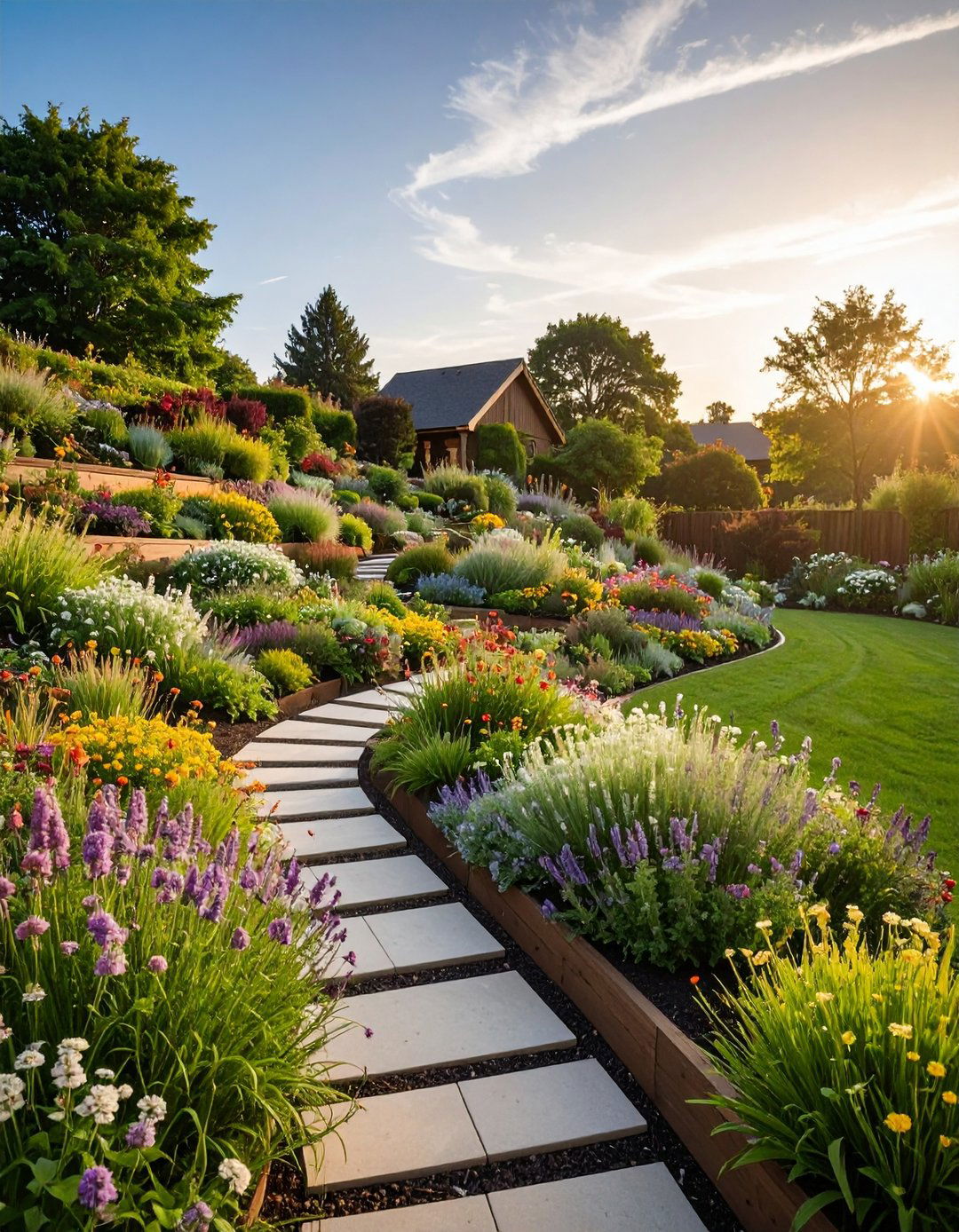
Unlike a single, flat border, layered planting shelves cascade down a backyard slope, letting color flow like water while gripping the soil. Start by cutting shallow benches into the grade, edging each with weather-resistant timber or stone so roots have a secure niche. Designers suggest grouping drought-tough perennials—sedum, catmint, ornamental grasses—on higher, drier tiers and moisture-loving blooms such as astilbe or daylily closer to the foot where runoff collects. Deep mulch between plants suppresses weeds and slows water velocity, doubling erosion control. Over time, the lush steps read like a living waterfall that softens hard lines.
3. Stone Steps and Pathways for Confident Backyard Access
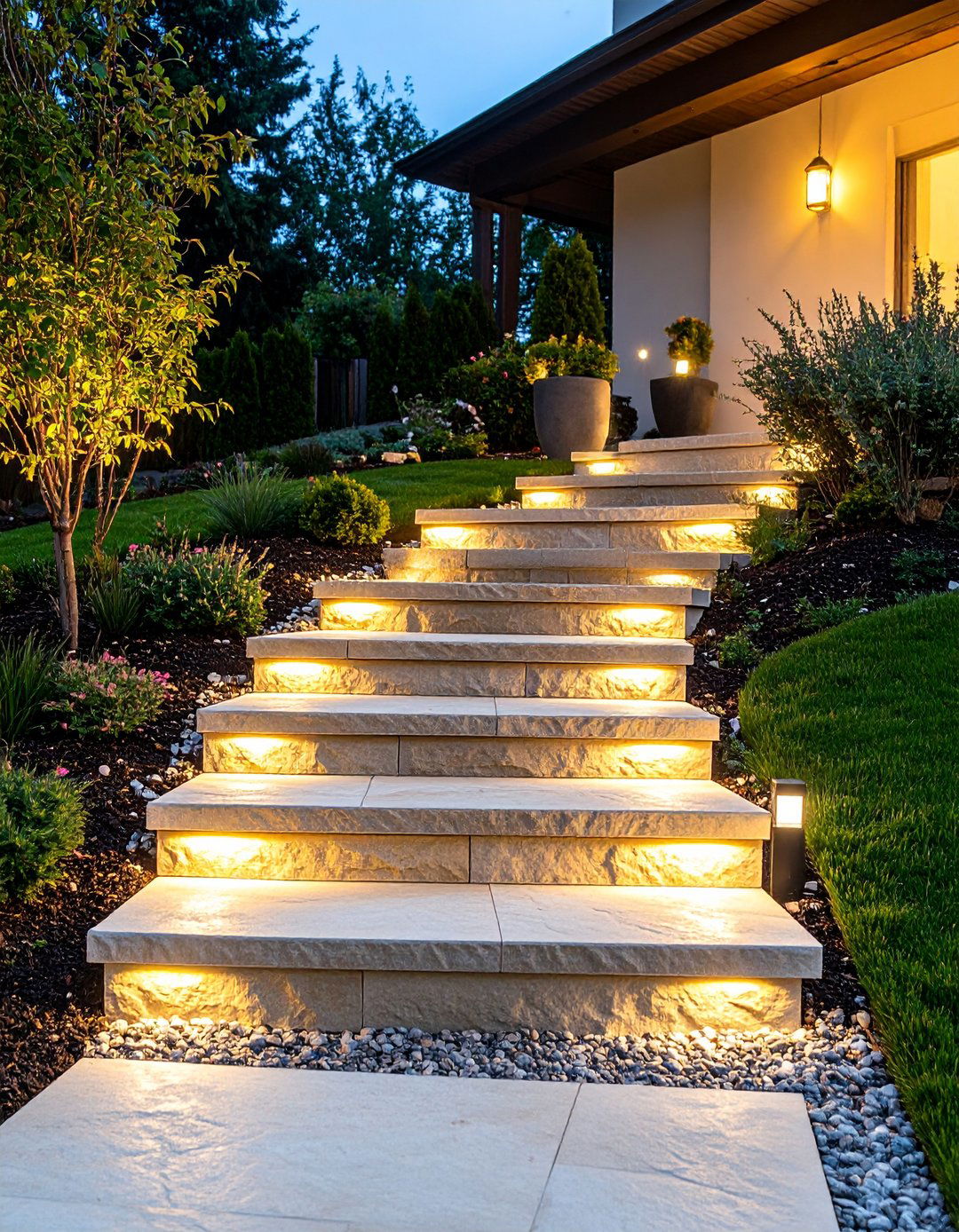
With broad, lightly textured stone steps stitched into the grade, traversing a sloped backyard feels more like an invitation than a chore. Tamping a gravel sub-base, then mortaring flagstone or concrete pavers in 12- to 18-inch treads, gives every footfall a level landing while allowing water to slip through joints. Builders recommend a comfortable 6- to 7-inch rise and anchoring riser stones into the bank to combat freeze–thaw. Handrails of sealed timber or powder-coated steel add security and a tidy line. Flank the flight with low LED path lights so evenings feel as sure-footed as midday.
4. Gabion Seating Walls that Double as Backyard Art
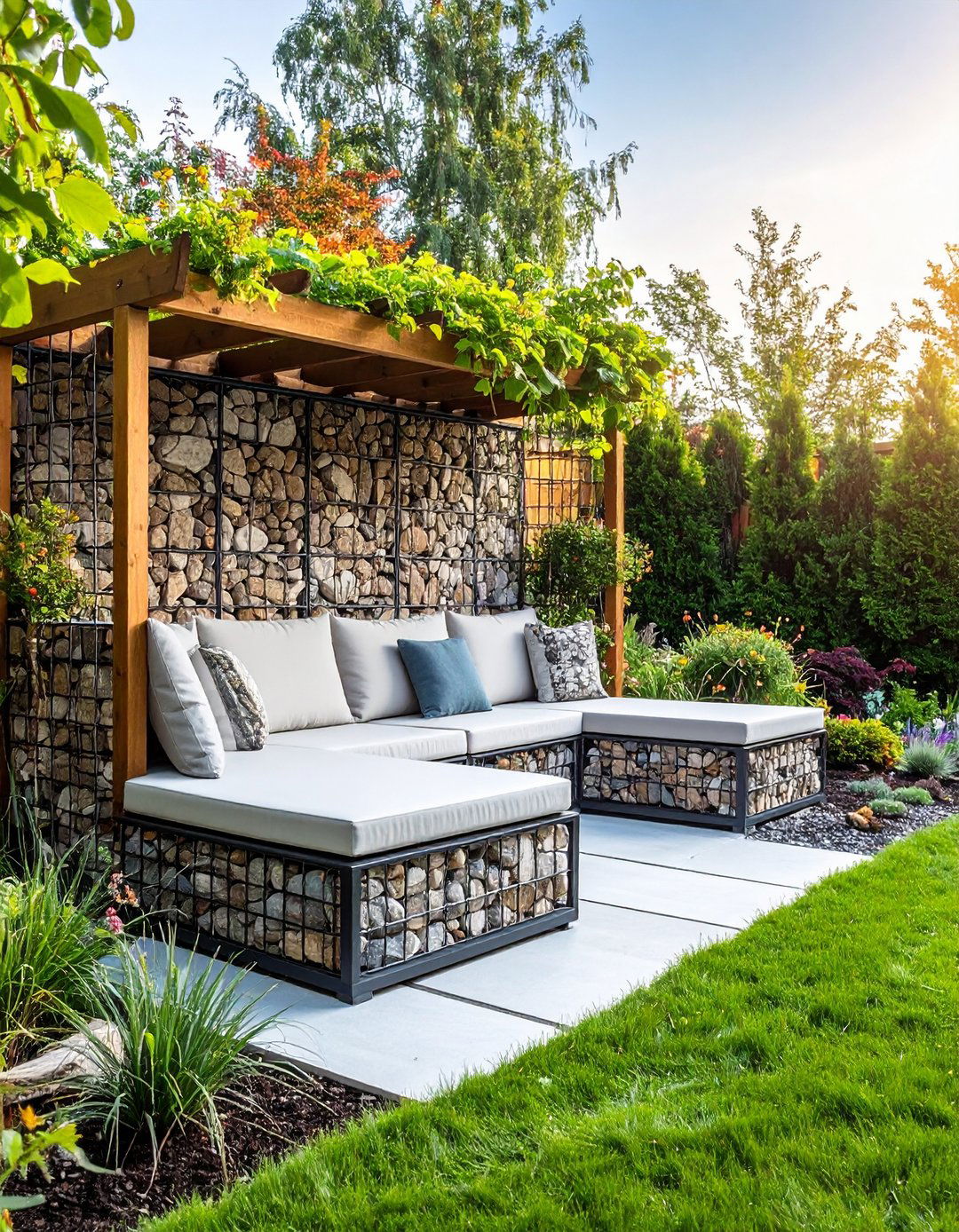
Certainly, gabion walls—wire cages packed with local stone or recycled brick—offer a contemporary way to tame a backyard slope while creating perch-friendly benches. Because the cages drain freely and flex with soil movement, they resist the hydrostatic pressure that can topple rigid masonry on steep grades. Show-garden installations highlight gabions as seat wall, planter, fire-pit surround, and retaining structure in one modular block. Filling baskets with on-site rubble slashes hauling costs, and capping the top course with a smooth timber plank makes a comfortable perch less than 18 inches high.
5. Hillside Deck Platforms for Elevated Backyard Lounging
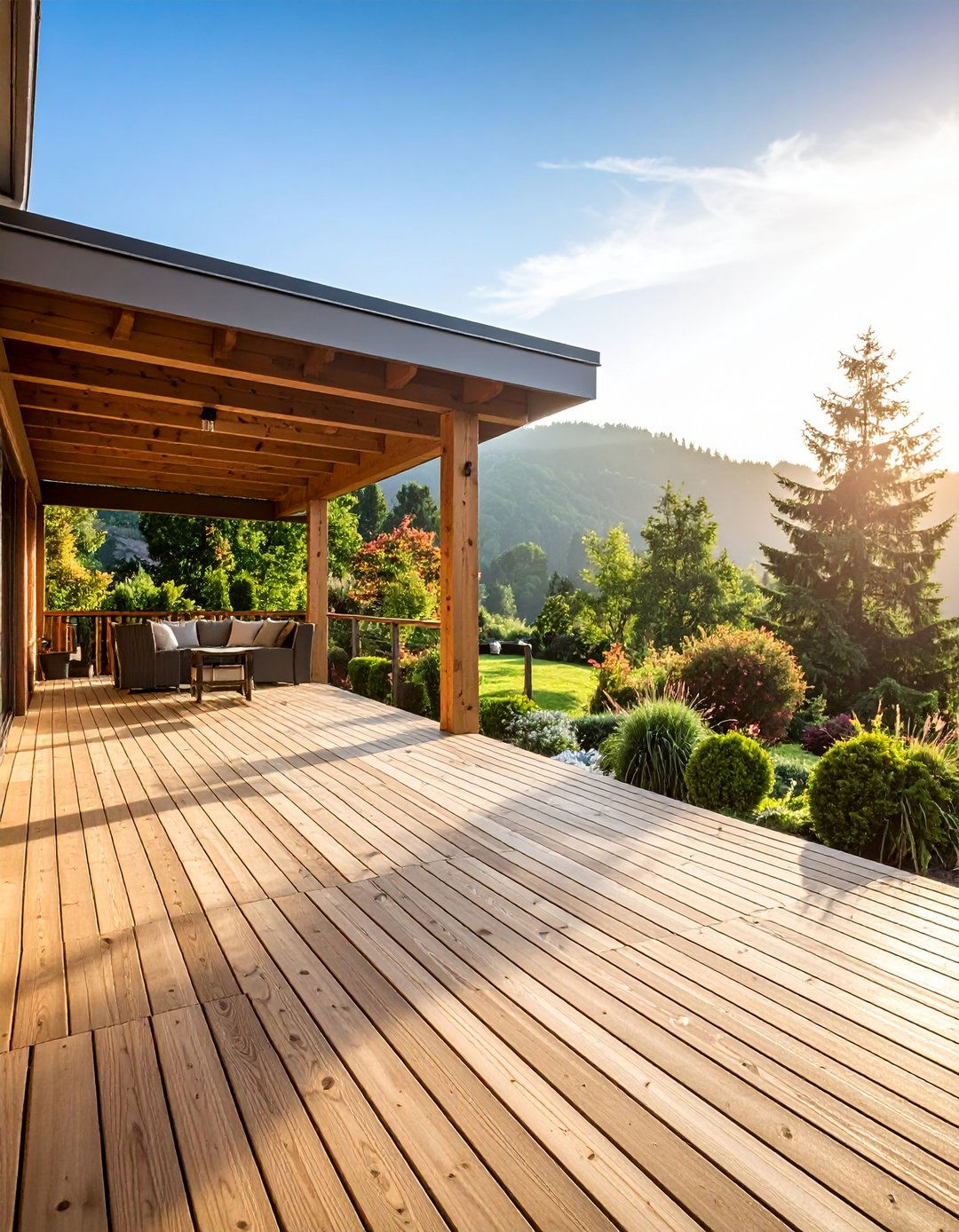
Take the living area above ground by cantilevering a framed deck off deep-set posts anchored into the hillside, giving a sloped backyard its very own stage. Pressure-treated piers or helical piles transfer loads to stable soil, and adjustable post bases simplify leveling across irregular terrain. Specialists counsel tighter joist spacing and diagonal bracing that stiffens the frame against lateral forces. Composite or hardwood boards laid perpendicular to the view visually widen the platform and shed rain through deliberate gaps. Include a lower landing or floating module so the structure spills gracefully into surrounding plantings.
6. Groundcover Blankets to Anchor the Backyard Soil
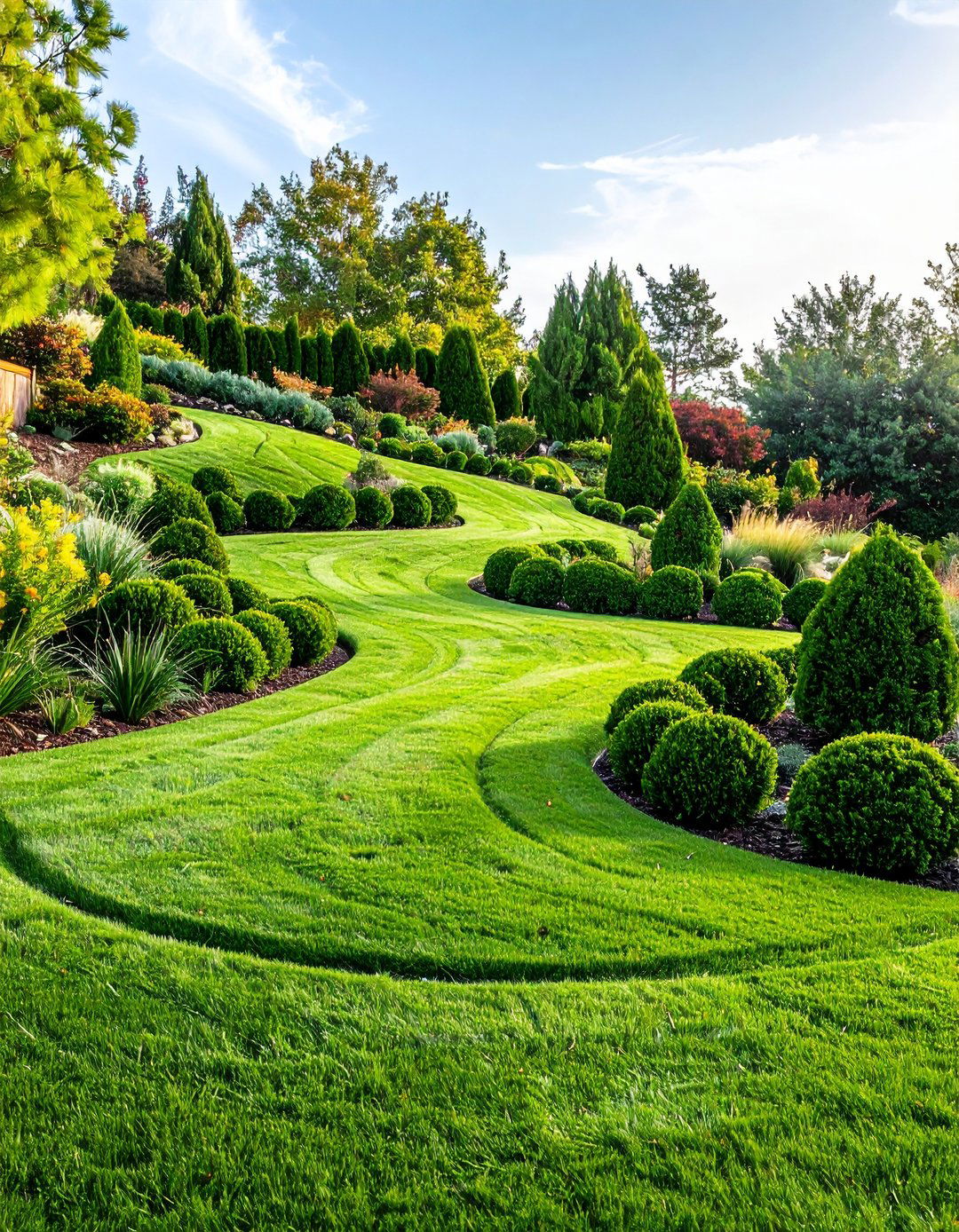
With a quilt of drought-resistant groundcovers stitched across the slope, a backyard stays green without constant mowing or runoff gullying channels through bare earth. Deep-rooted natives like switch grass, juniper, and creeping phlox weave dense mats that hold topsoil while offering color and habitat. Horticulturists emphasize staggered planting and minimal irrigation once roots establish, allowing vegetation to outcompete weeds naturally. Add biodegradable jute netting between plugs on the steepest pitches to stabilize seedlings during the first season. Once matured, the emerald carpet needs little more than annual trimming, freeing weekends for relaxation.
7. Dry Creek Bed Swale for Decorative Drainage
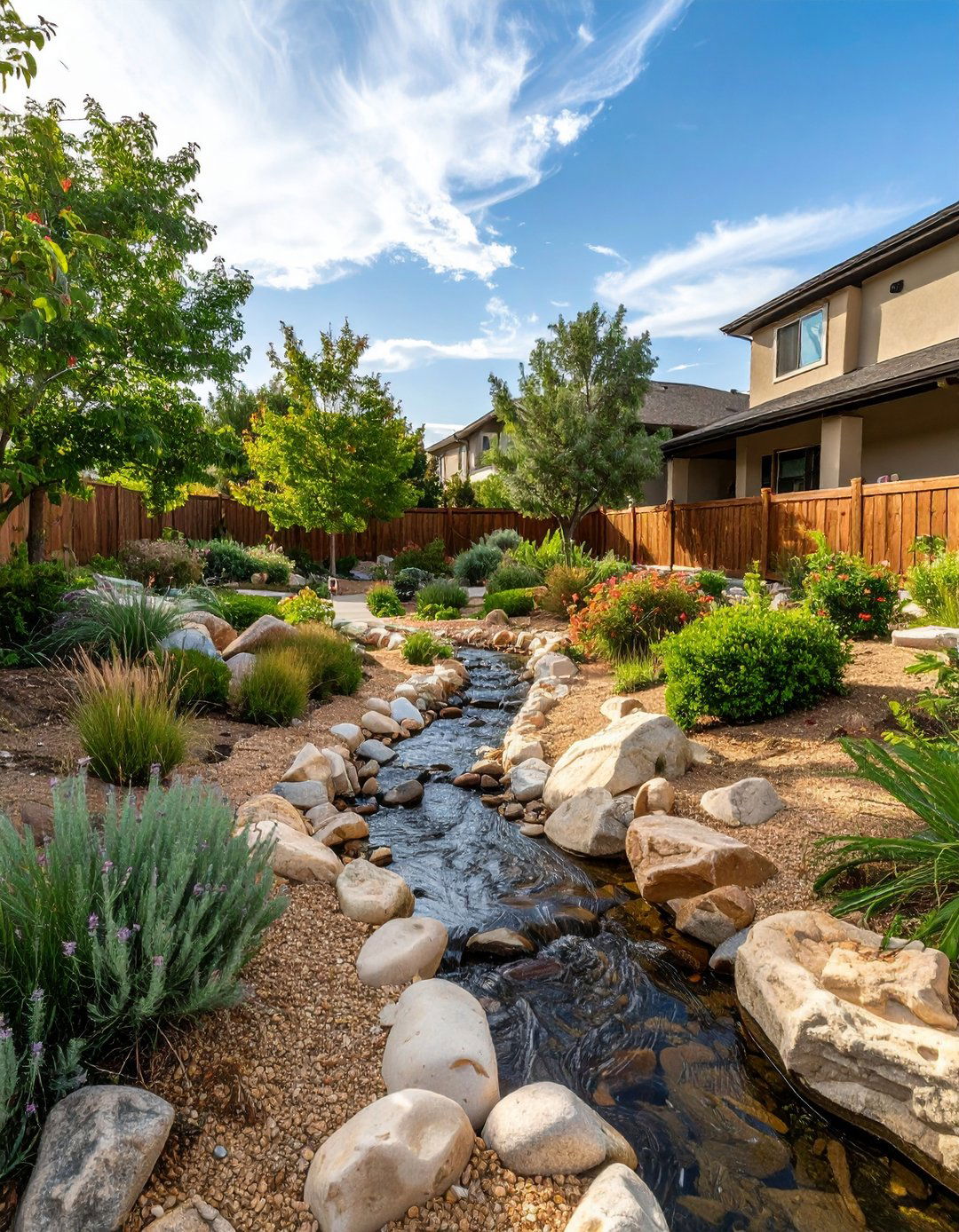
A ribbon of rounded river rock tracing the low line of your backyard slope functions as both sculpture and storm-water manager. Digging a shallow 12- to 18-inch trench that widens like a miniature canyon invites runoff to filter through gravel before dispersing into soil, reducing erosion furrows lower down. Lining the channel with fabric stops sediment from clogging stones, while strategic boulders create eddies that slow flow and add drama. Tuck iris or dwarf sedge along the banks to blur edges. In dry weather, the creek shines as a zen-inspired focal strip.
8. Rain-Garden Pockets to Harvest Backyard Runoff
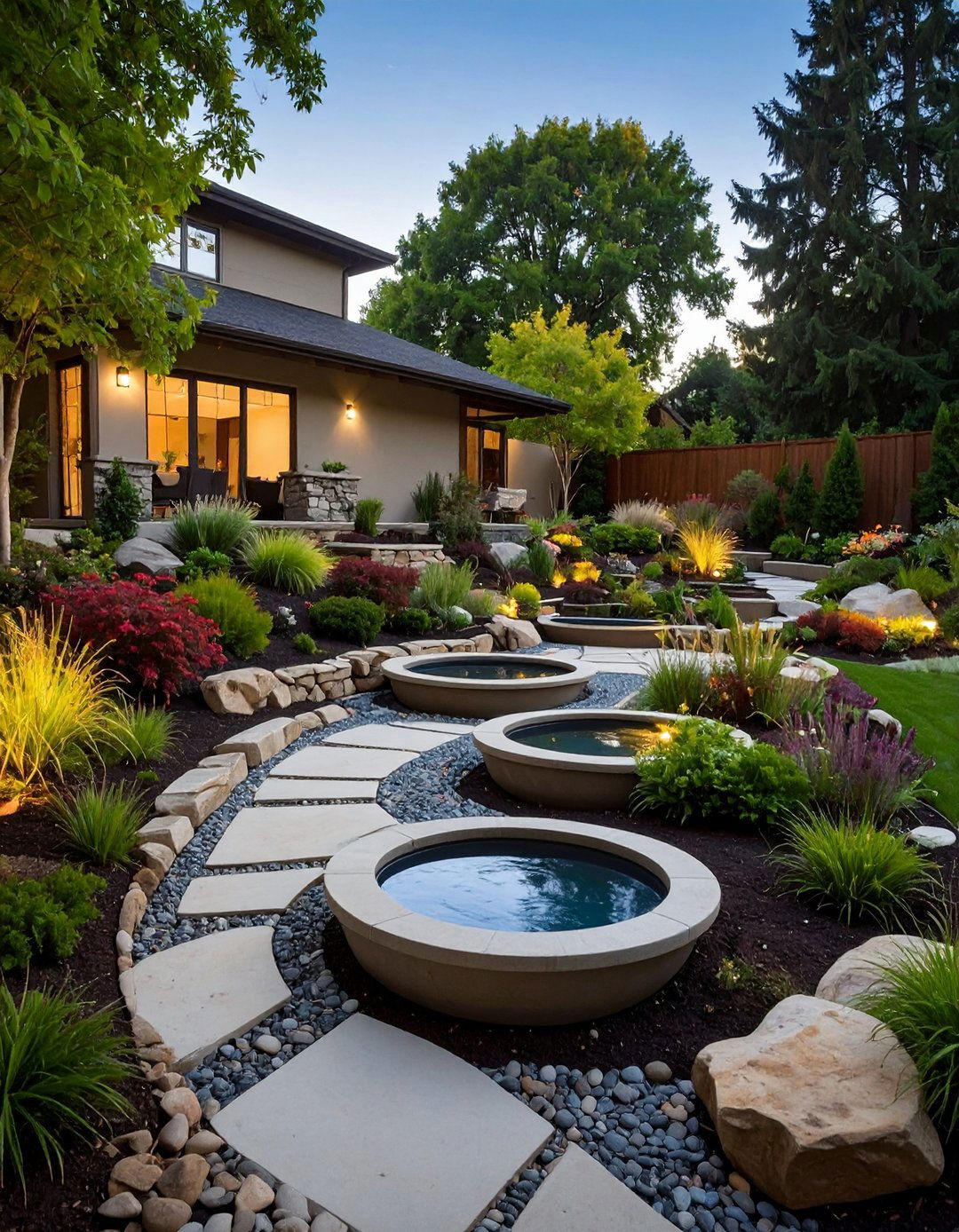
As rainfall races down a steep backyard, terracing bowl-shaped rain-garden pockets midway interrupts the torrent and turns it into irrigation gold. Dig each cell no more than twelve percent below grade to avoid destabilizing the hillside, then fill with moisture-loving natives such as swamp milkweed, joe-pye weed, and red twig dogwood. Overflow spillways lined with river stone direct excess water calmly to the next pocket or a French drain. The stepped basins recharge groundwater, cool the microclimate, and provide seasonal nectar—while sparing lower patios from muddy splatter and unsightly flooding during storms.
9. Native Meadow Strip for Low-Mow Backyard Beauty

Bringing a slice of prairie onto a sloped backyard harnesses deep-rooted grasses to knit soil while delivering a luminous tapestry through the seasons. Broadcast a region-specific native seed mix across a lightly scarified surface and cover with compost to speed germination. Species such as little bluestem, black-eyed Susan, and purple coneflower establish fibrous roots that drill several feet into subsoil, locking hillsides tighter than turf. Once the meadow fills in, a single early-spring mow replaces weekly trims, and the area doubles as pollinator habitat without water-hungry treatments.
10. Built-In Hillside Slide for Backyard Adventure
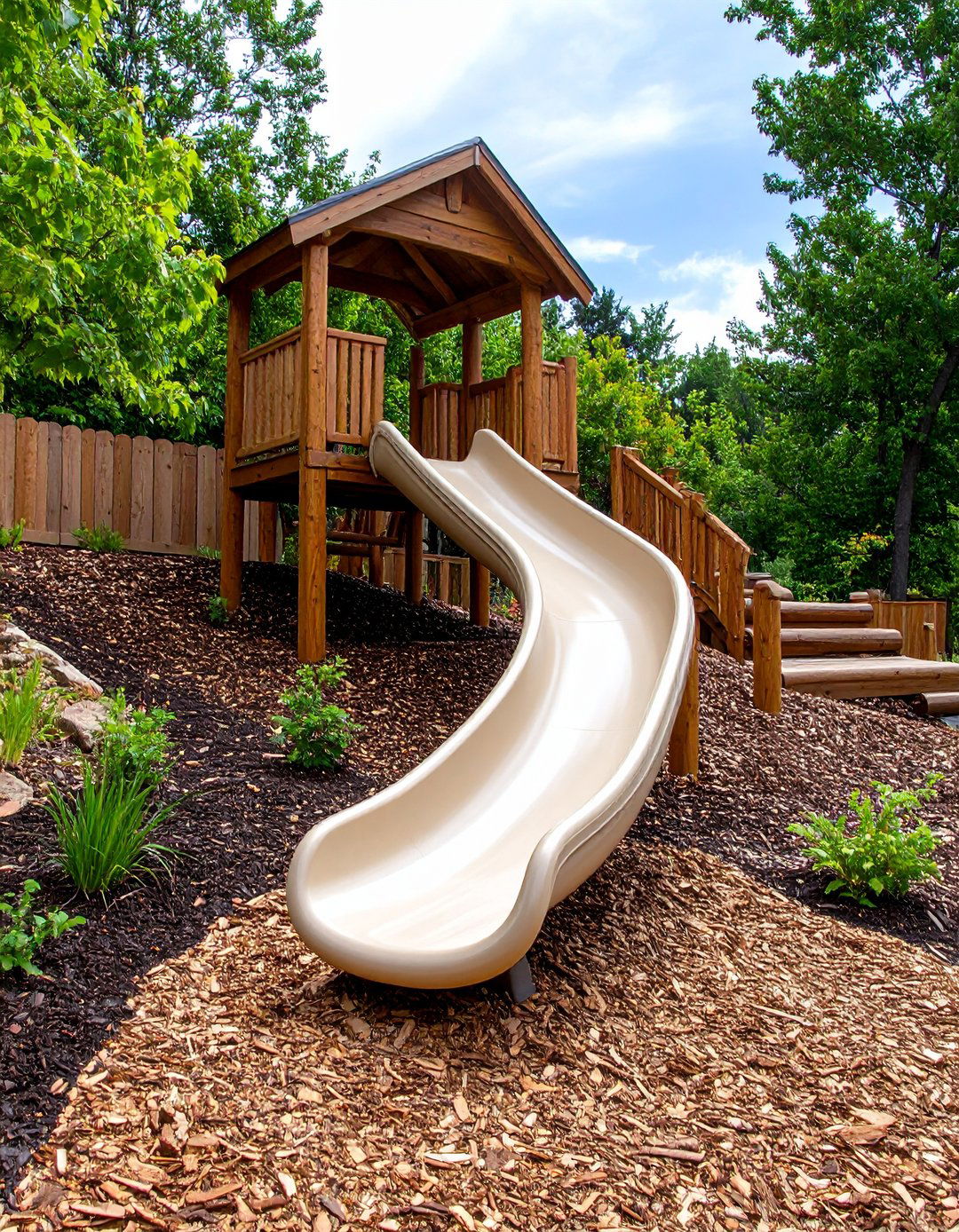
Consider channeling playground energy by embedding a sturdy slide into the hillside so kids ride the natural grade rather than teeter on tall towers in the backyard. Shape a gentle chute with landscape timbers as side rails, then secure a commercial-grade slide section between them; ground contact keeps the profile low and fall heights safe. DIY families report that pairing the slide with rustic log steps or a rope ascent path gives a round-trip circuit that burns energy and encourages exploration. Finish surrounding soil with mulch or rubber chips for soft landings and frame the zone with fast-clumping grasses.
11. Terraced Fire-Pit Nook for Cozy Backyard Evenings
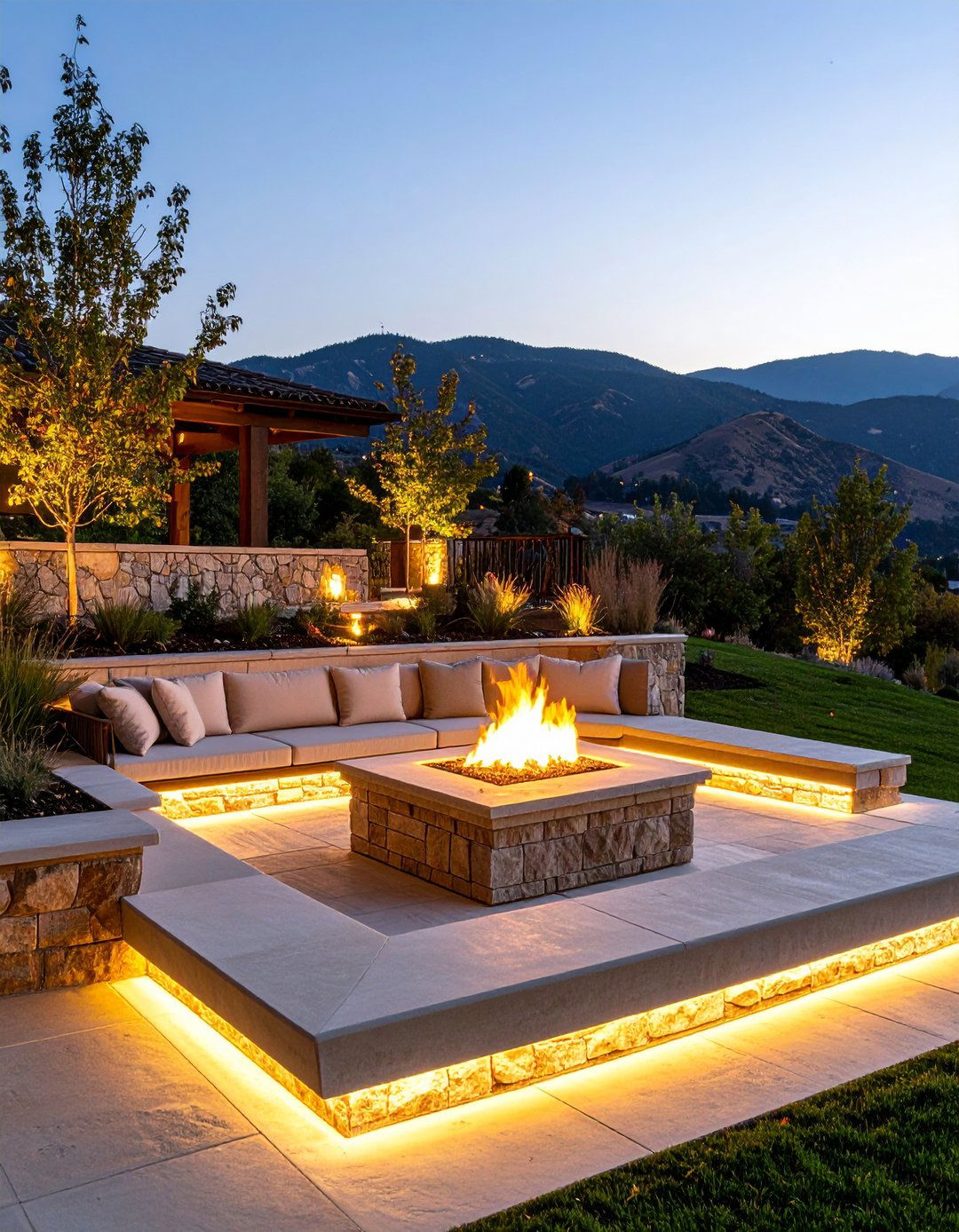
Gathering around a flickering fire feels dramatic when the pit is cradled in a level terrace carved into the backyard slope. Cut a semicircular bench into the bank and retain it with low stone or concrete walls that also block wind. Designers recommend choosing a smokeless steel insert dropped into a gravel base to keep embers off masonry and simplify cleanup. Because the terrace sits below grade, hillside views rise behind the flames. Edge steps with LED strip lights so guests find seats safely after dusk without overpowering the night glow.
12. Tiered Vegetable Beds that Follow the Backyard Contour

One tasty way to claim a slope is to terrace it into stacked vegetable beds, each only two to three feet deep so harvesting remains comfortable from the downhill side. Shoring the fronts with rot-resistant cedar or composite boards turns the incline into mini raised beds, perfect for square-foot gardening without stooping. Serious growers note that the uphill back wall traps warmth, accelerating germination and extending harvests. Install drip lines at the top of each tier; gravity then distributes water evenly. Cover paths with mulch or flagstone to keep muddy foot traffic at bay.
13. Pergola Overlook Providing Dappled Backyard Shade
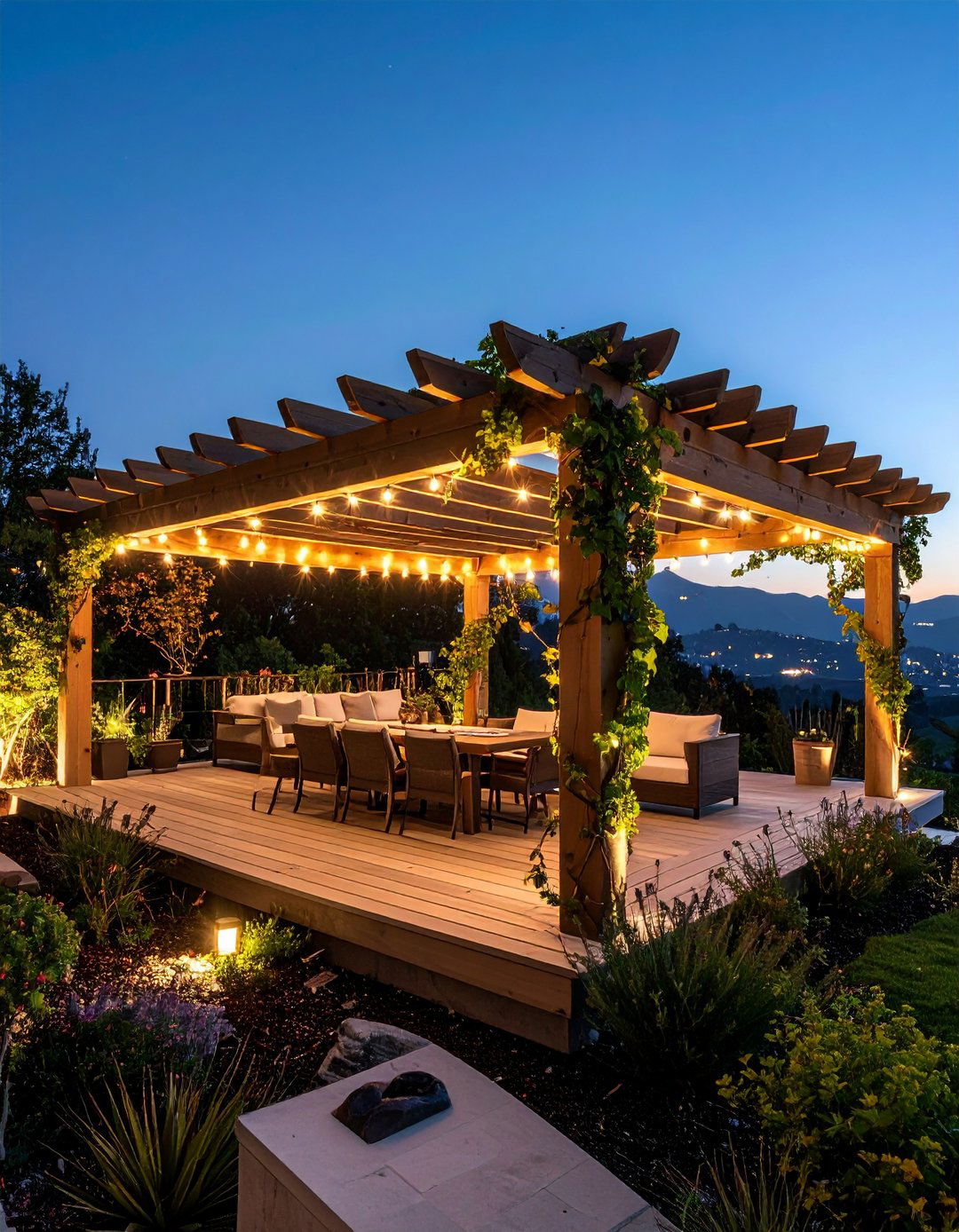
By crowning the highest terrace with a single-slope pergola, you create an airy overlook where the backyard panorama becomes lunchtime scenery. Support posts set on concrete piers at staggered depths meet grade, while rafters follow the hill’s fall to shed rain naturally. Add climbing vines to soften posts, and string café lights across beams for an evening retreat. Mount a bar-height counter along the downhill rail so guests can rest drinks without blocking the view.
14. Pondless Waterfall for Soothing Backyard Sound
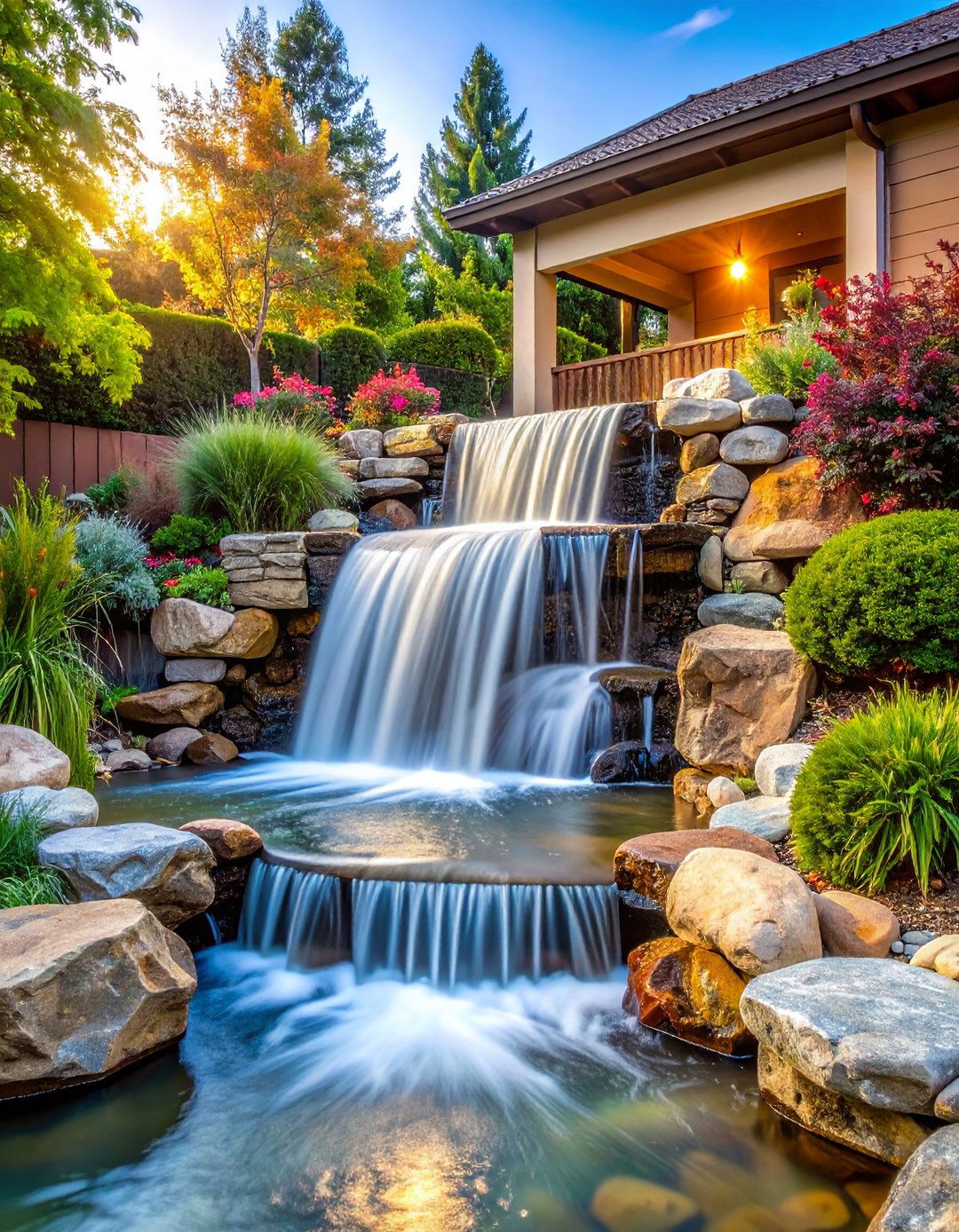
Owing to gravity, a pondless waterfall is tailor-made for a sloped backyard: water tumbles just far enough to sing, then disappears into a hidden basin before maintenance becomes a chore. Carve a serpentine channel with flexible liner and stack flat shale shelves so sheets sparkle over each lip. A recirculating pump in the underground reservoir keeps energy costs low and eliminates mosquito-friendly ponds. Strategically placed boulders double as seating and pin liner edges, while night uplights turn the cascade into living theater.
15. Contour Privacy Planting for Secluded Backyard Corners

What was once an exposed slope can morph into a green privacy wall by running staggered rows of evergreens along the backyard contour. Planting on the contour prevents water from pooling around trunks and lets roots act as buttresses that reinforce the bank. Homeowners report success with arborvitae, holly, and laurel, mixed with serviceberry or redbud pockets for seasonal bloom. Keep spacing generous—two-thirds of mature width—and install a drip line above the upper row so deep roots anchor soil and screen views sooner.
16. Low-Voltage Step Lighting to Guide Nighttime Backyard Strolls
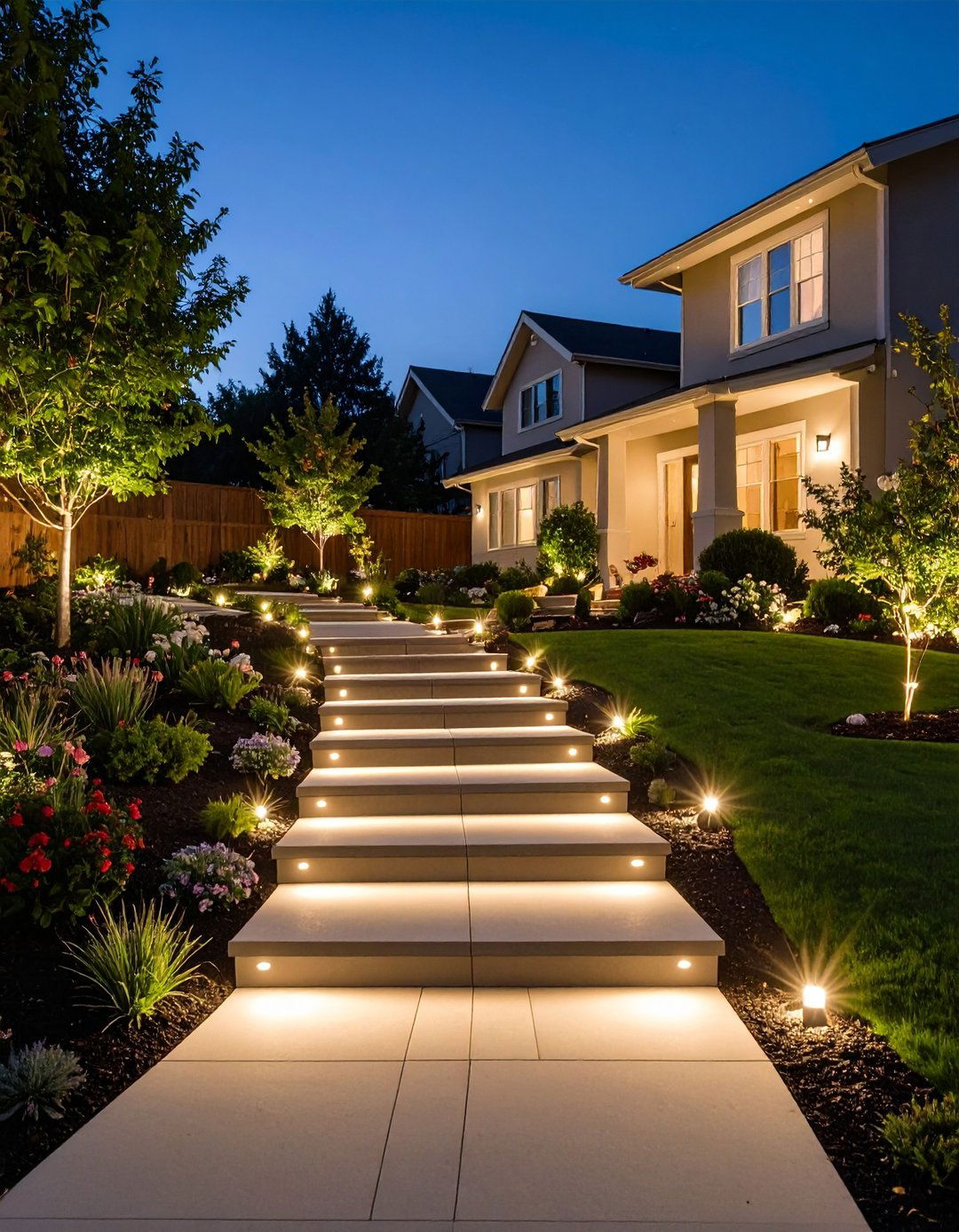
Shortly after dusk, recessed LED step lights turn a sloped backyard into a softly glowing amphitheater rather than a black void. Solar or low-voltage fixtures tuck neatly into risers, requiring minimal wiring yet providing enough downward illumination to meet safety codes without glare. Reviews of budget-friendly kits highlight waterproof housings and dusk-to-dawn sensors that spare homeowners from constant switches. For the most even spread, space lights no farther apart than three treads and aim beams toward the inner path edge. Warm-white temperatures around 2700 K maintain cozy ambiance instead of harsh glare.
17. Bioswale Ribbon to Filter Backyard Runoff
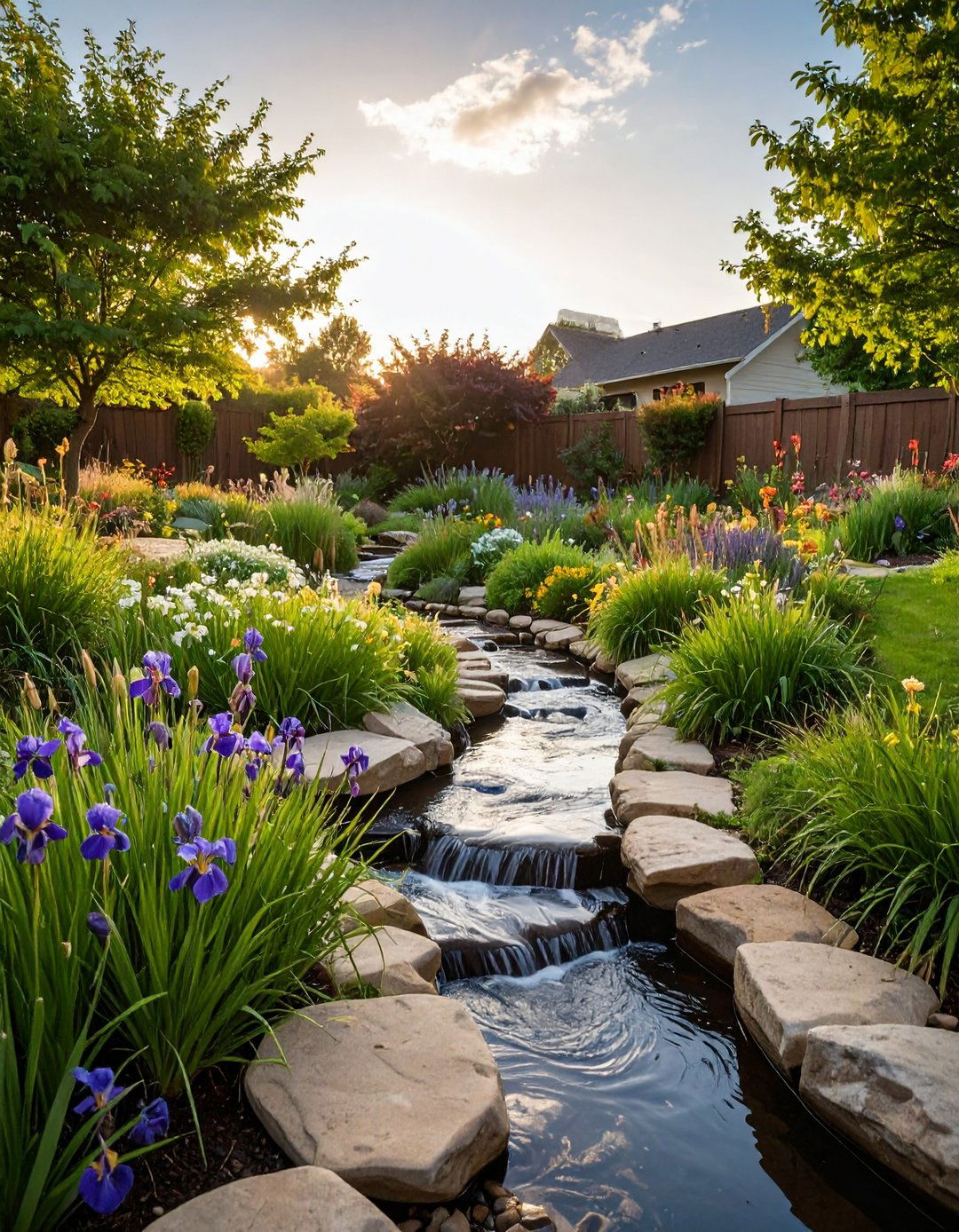
Due to heavier cloudbursts, routing slope water through a vegetated bioswale keeps a backyard drain-friendly and pollinator-rich at once. Dig a shallow trench—no more than a one-percent grade—so water lingers long enough for sediment to drop out. Layer permeable soil, compost, and coarse sand, then plant rushes, blue flag iris, or little bluestem whose roots act as living filters. Guides note keeping the swale six feet from foundations and lining sides with native stone to resist undercutting. Done right, the ribbon doubles as a wildflower strip that can earn storm-water credits.
18. Sculptural Rock Garden to Celebrate the Backyard Grade
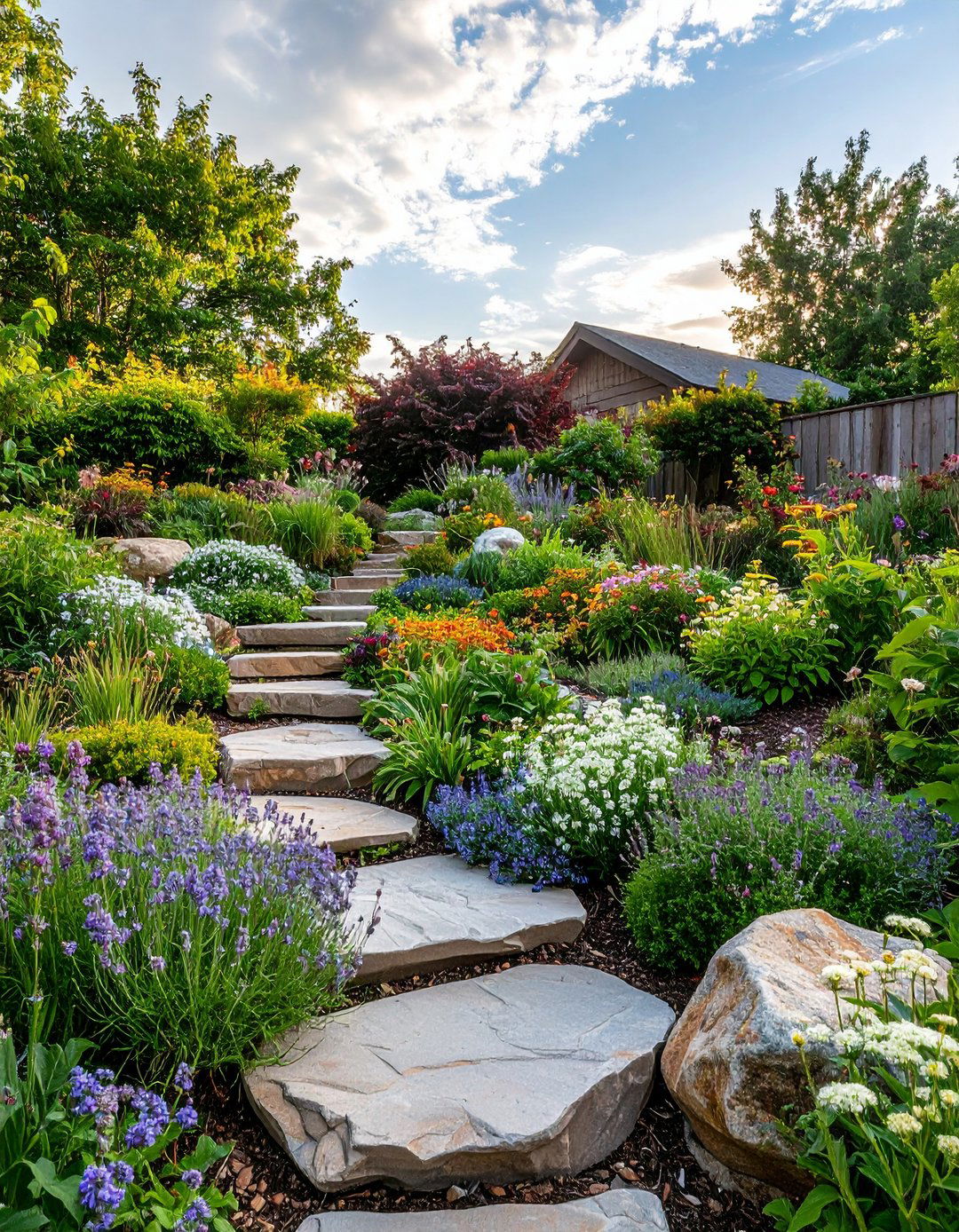
Another artistic answer is a sculptural rock garden that nests boulders and alpine flowers across the backyard incline, turning maintenance headaches into mountain-style drama. Position stones so two-thirds of their mass buries below soil, emulating natural outcrops and forming micro-crevices for creeping thyme, sempervivum, and dwarf iris. Experts stress staggering rocks in triangles, never straight lines, for stability and flow. Filling gaps with gravel mulch quickens drainage and spotlights texture. By echoing native geology, the rockery feels rooted to place, uses little water, and breaks mowing into bite-size islands you can tend leisurely.
19. Terraced Amphitheater Seating for Backyard Events
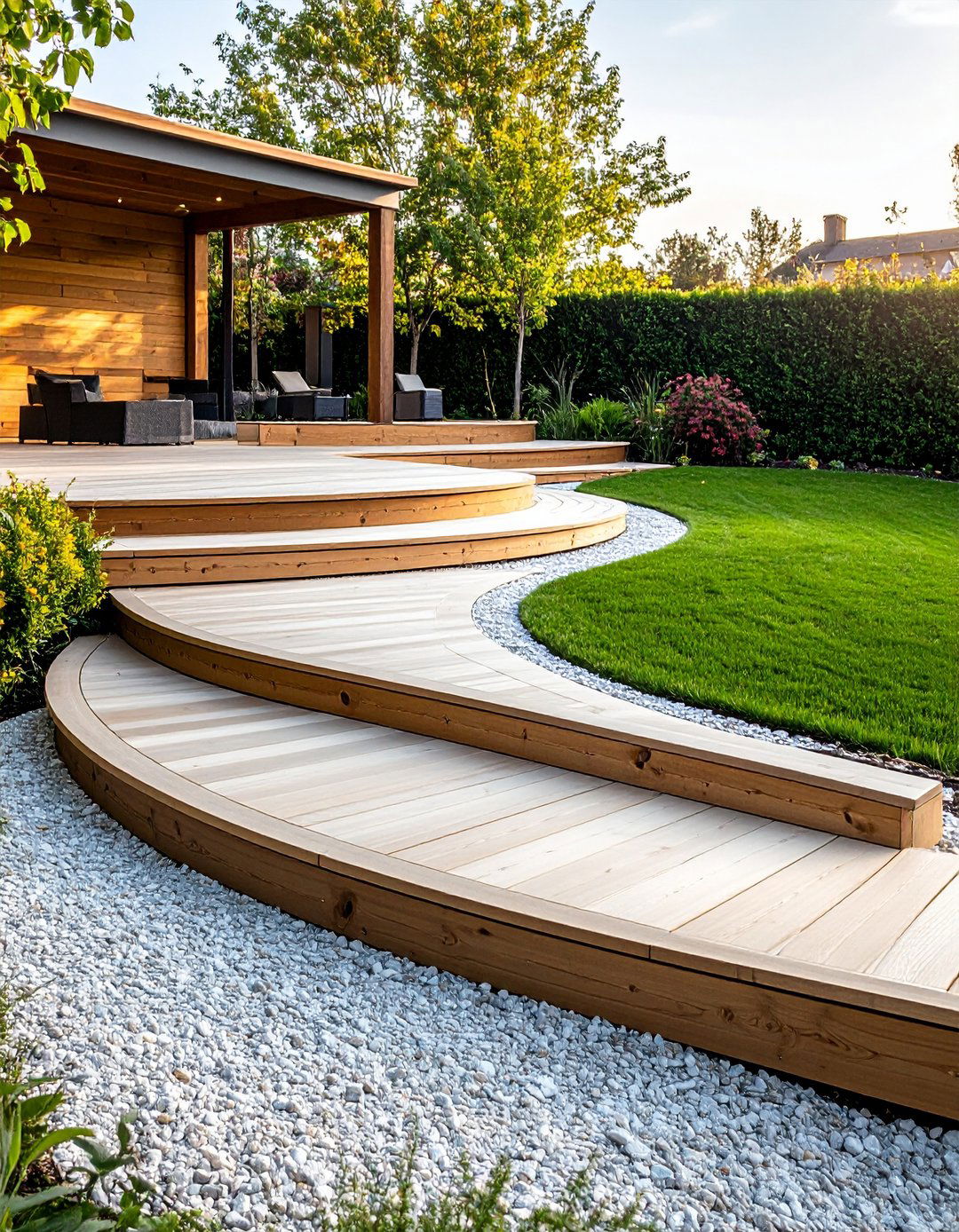
Looking to host movie nights or acoustic jam sessions? Carve a gentle amphitheater into the slope by stepping semicircular lawn or gravel seats toward a portable screen or fire-pit stage, turning an underused backyard hill into tiered seating. Each riser eight to ten inches high keeps sightlines clear, and timber edging doubles as drink rails. Success stories from public gardens show that adjacent switchback paths make the setup accessible for strollers and wheelchairs. Plant low, fragrant thyme between treads so traffic releases scent instead of mud on warm summer evenings.
20. Switchback Path with Rails for Gentle Backyard Walks
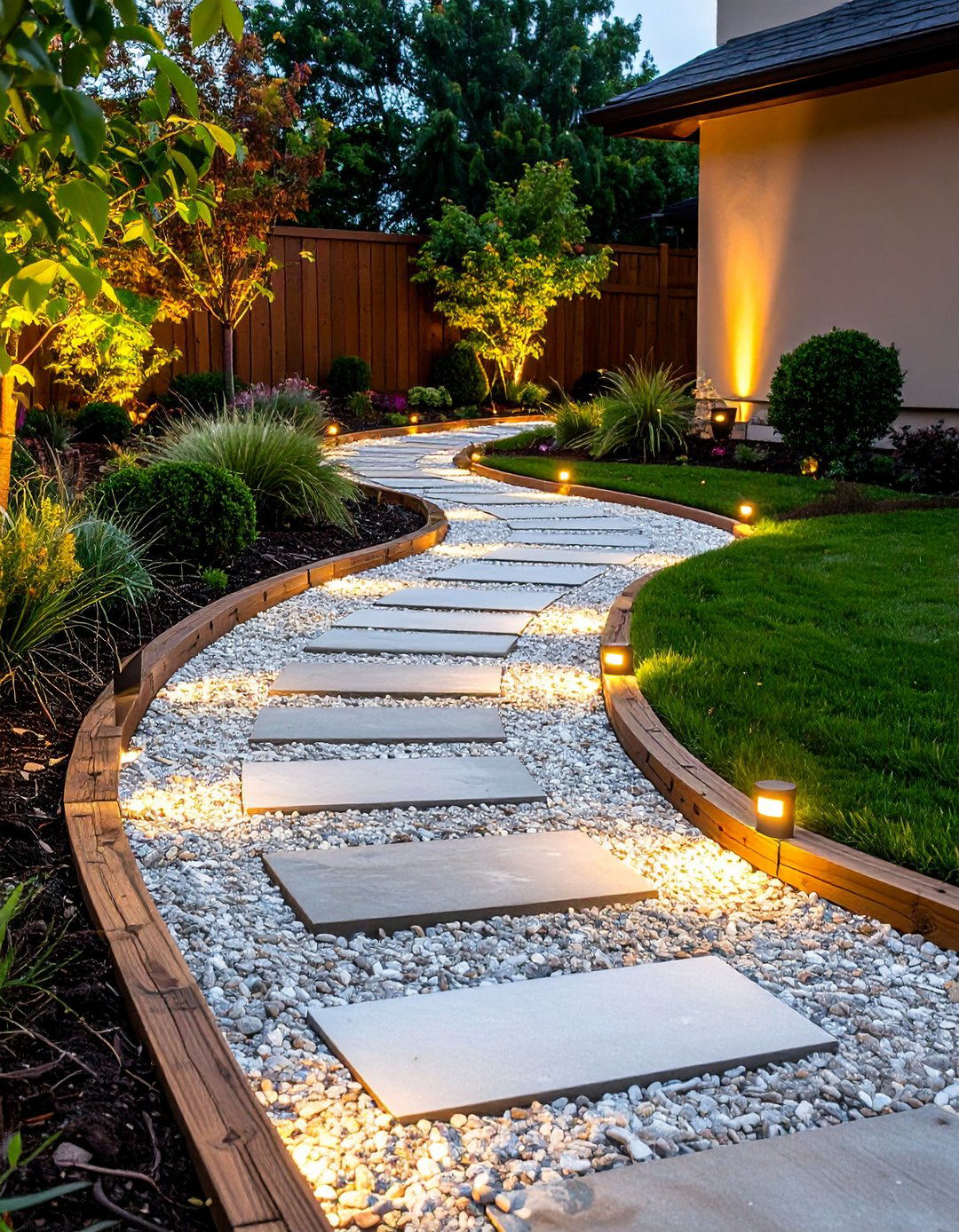
Finally, weaving a switchback path down a steep backyard replaces slippery shortcuts with a moderate grade that gardeners and grandparents can navigate confidently. Design guidelines suggest widening turns into landings for benches or planters, which also break runoff velocity. Pea-gravel or decomposed-granite surfacing over compacted base allows rain to percolate, and edging both sides with timber or stone curbs keeps material in place. Handrails on the outer edge grant extra assurance, especially where frost or monsoon rains add slick conditions. Lighting the corners with low bollard lights completes a safe, scenic descent that feels like a garden journey.
Conclusion:
These twenty ideas prove that a down sloped backyard is less a limitation than a layered invitation: reinforce what needs strength, plant what needs roots, and celebrate verticality with decks, paths, and water. Select solutions that match your climate, budget, and lifestyle, and tackle the slope in phases so each terrace funds the next. With smart drainage, erosion-wise plants, and night-ready lighting, the incline will repay your effort in panorama, privacy, and play—turning every step outside into a small moment of arrival.


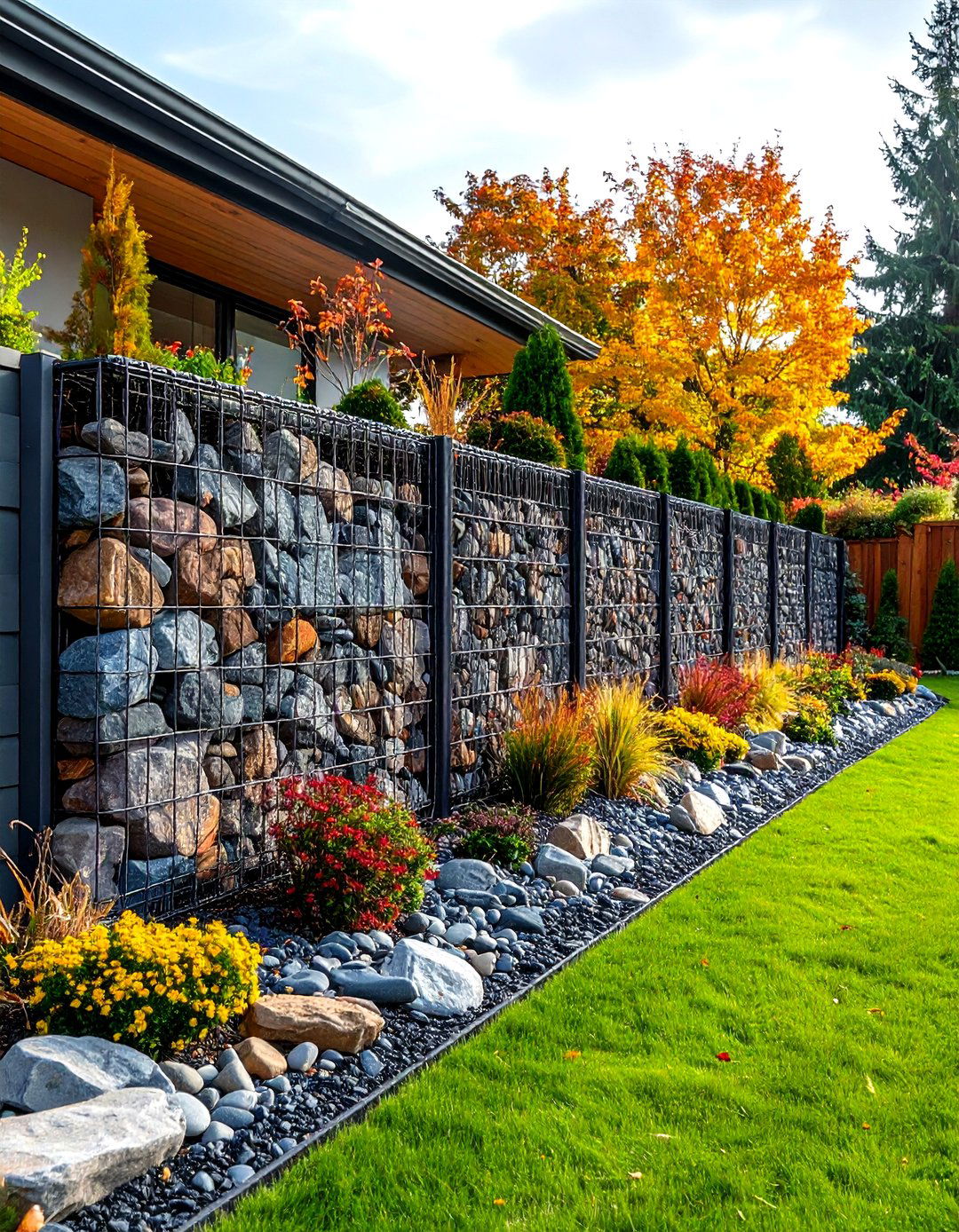

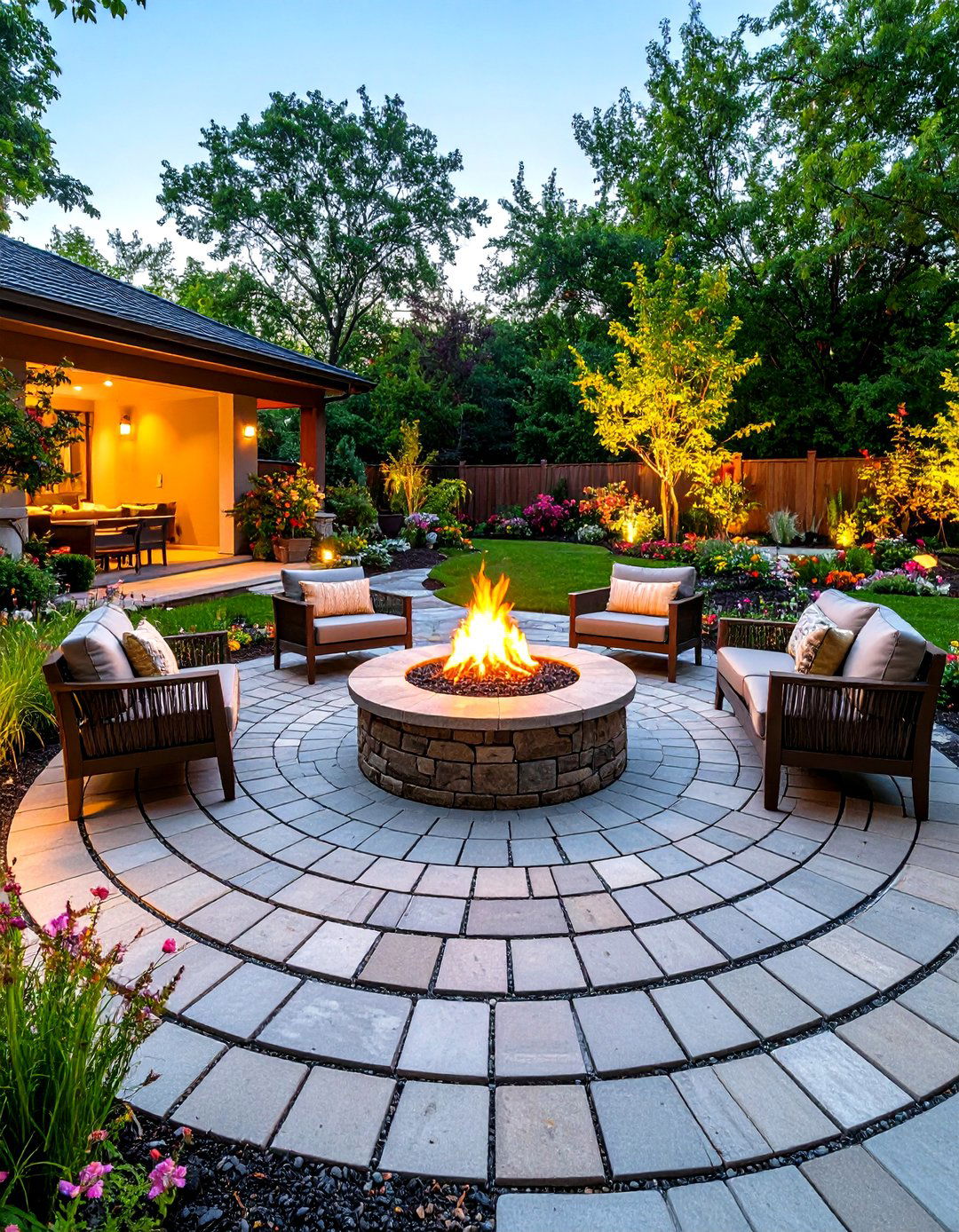
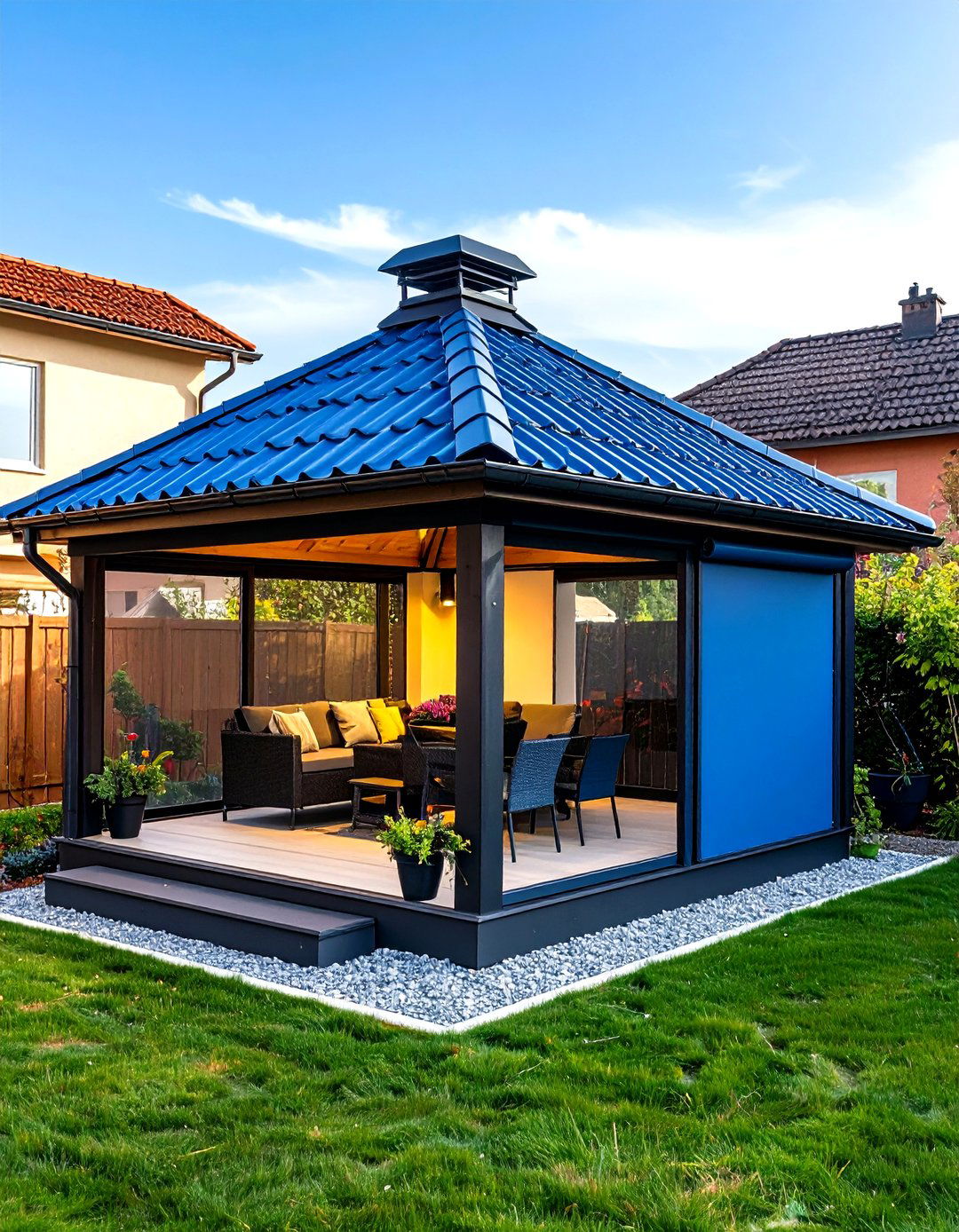
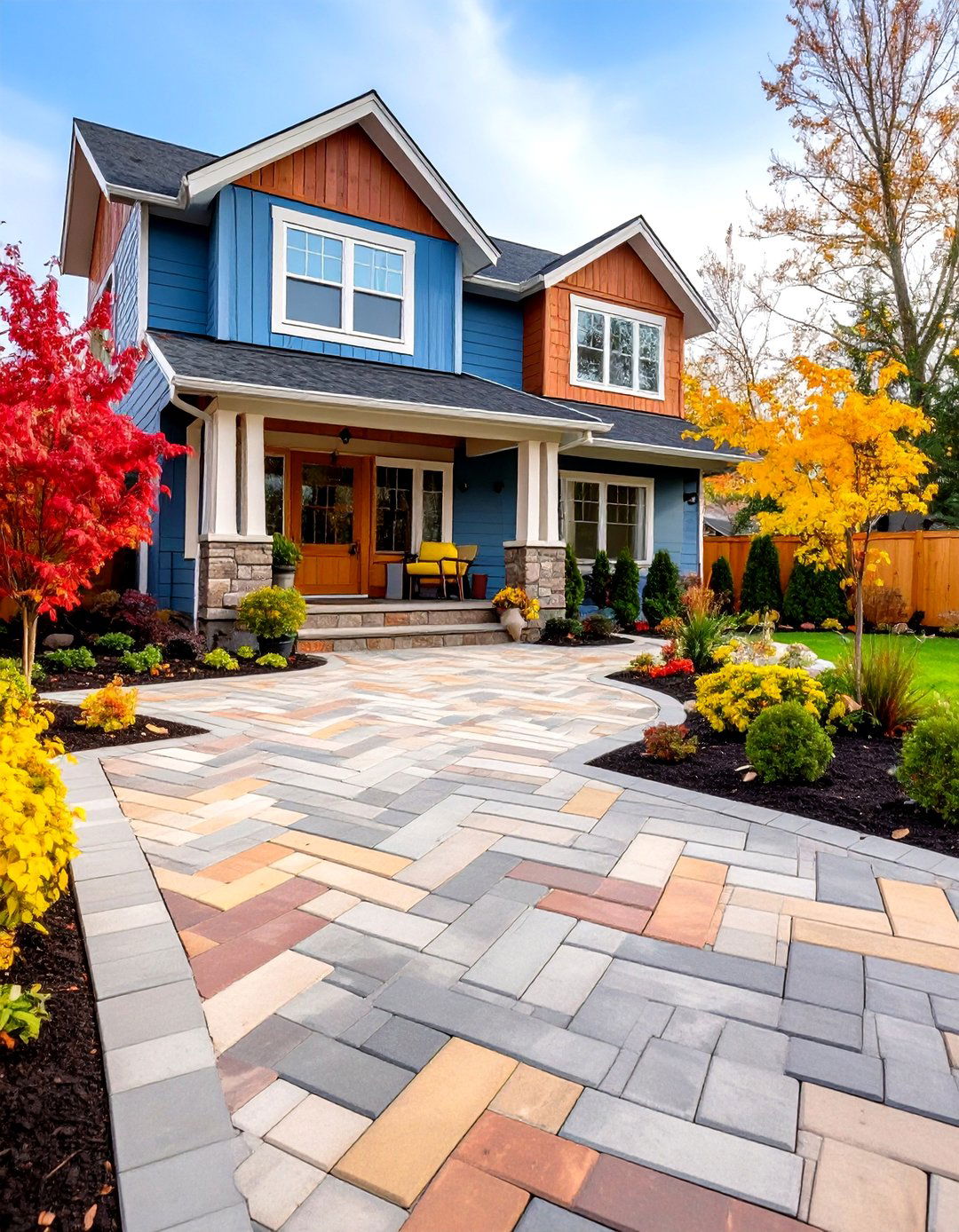
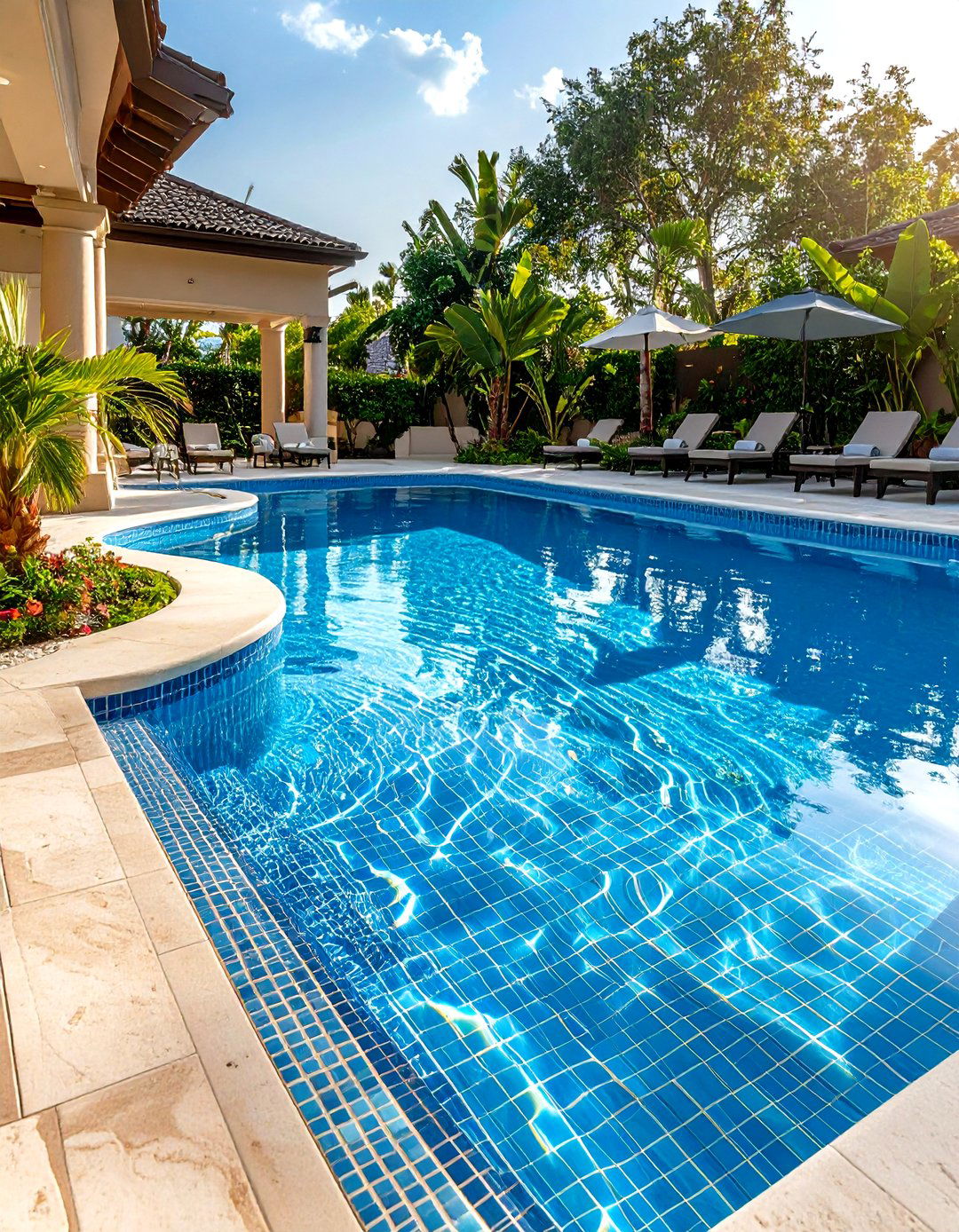
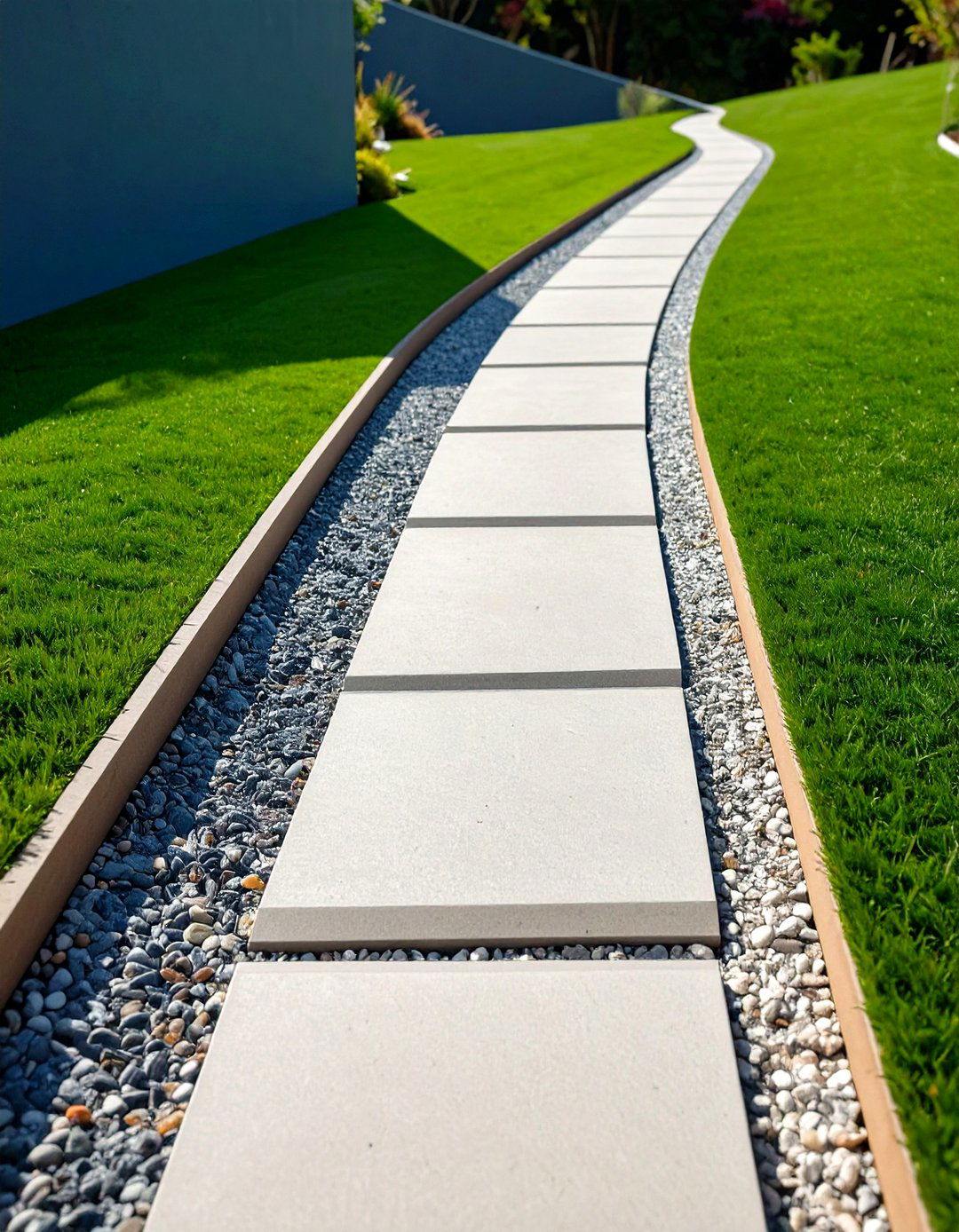

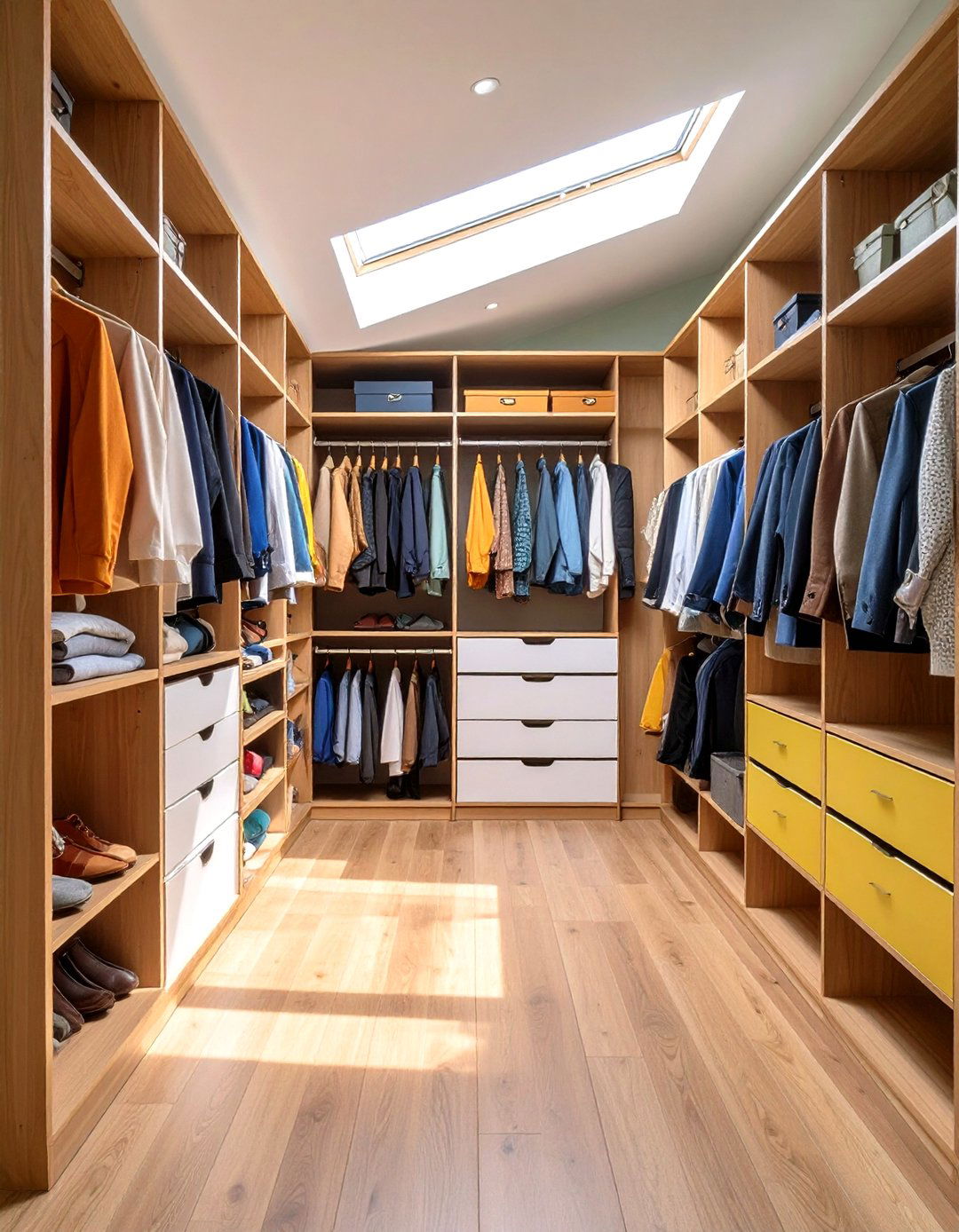
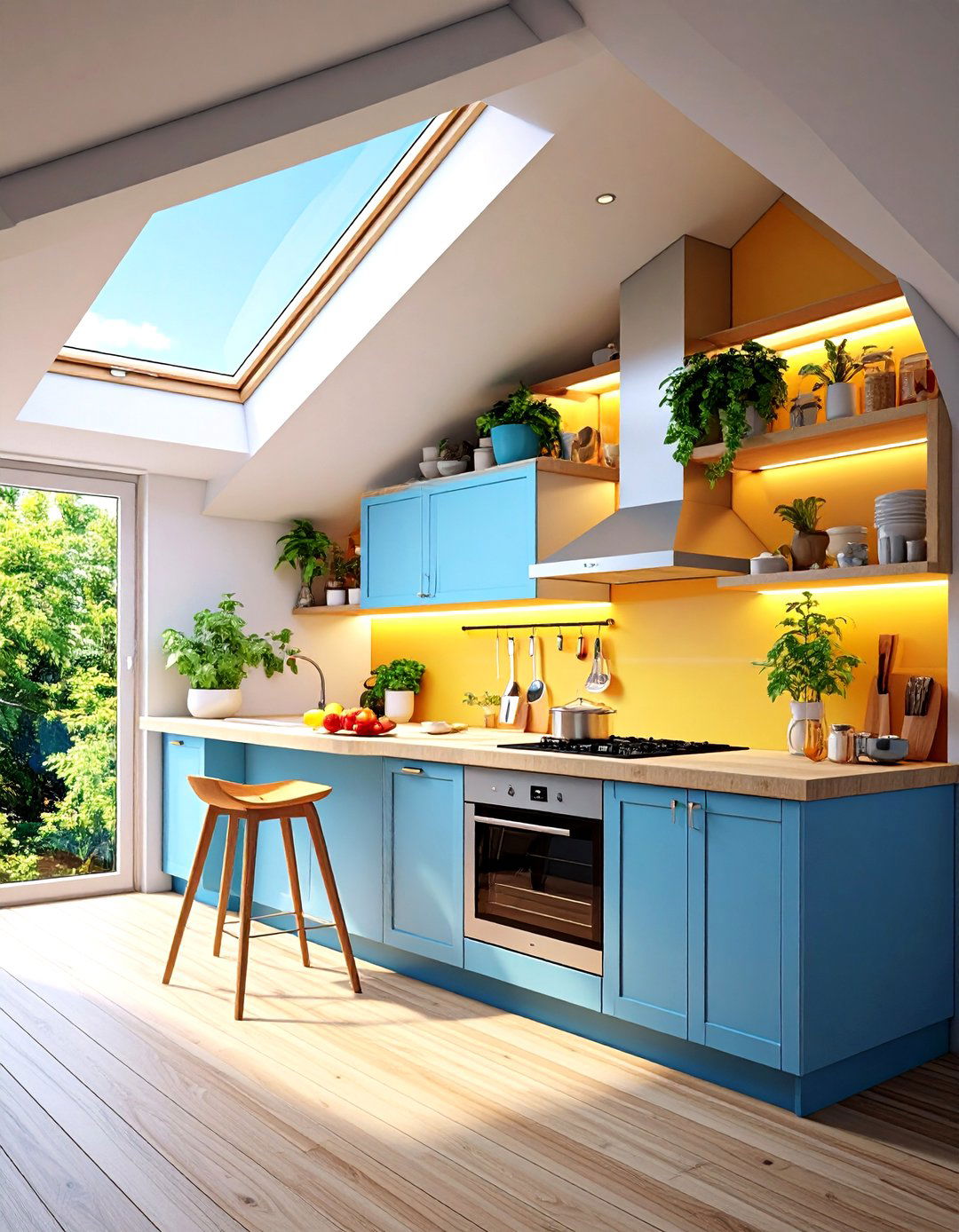
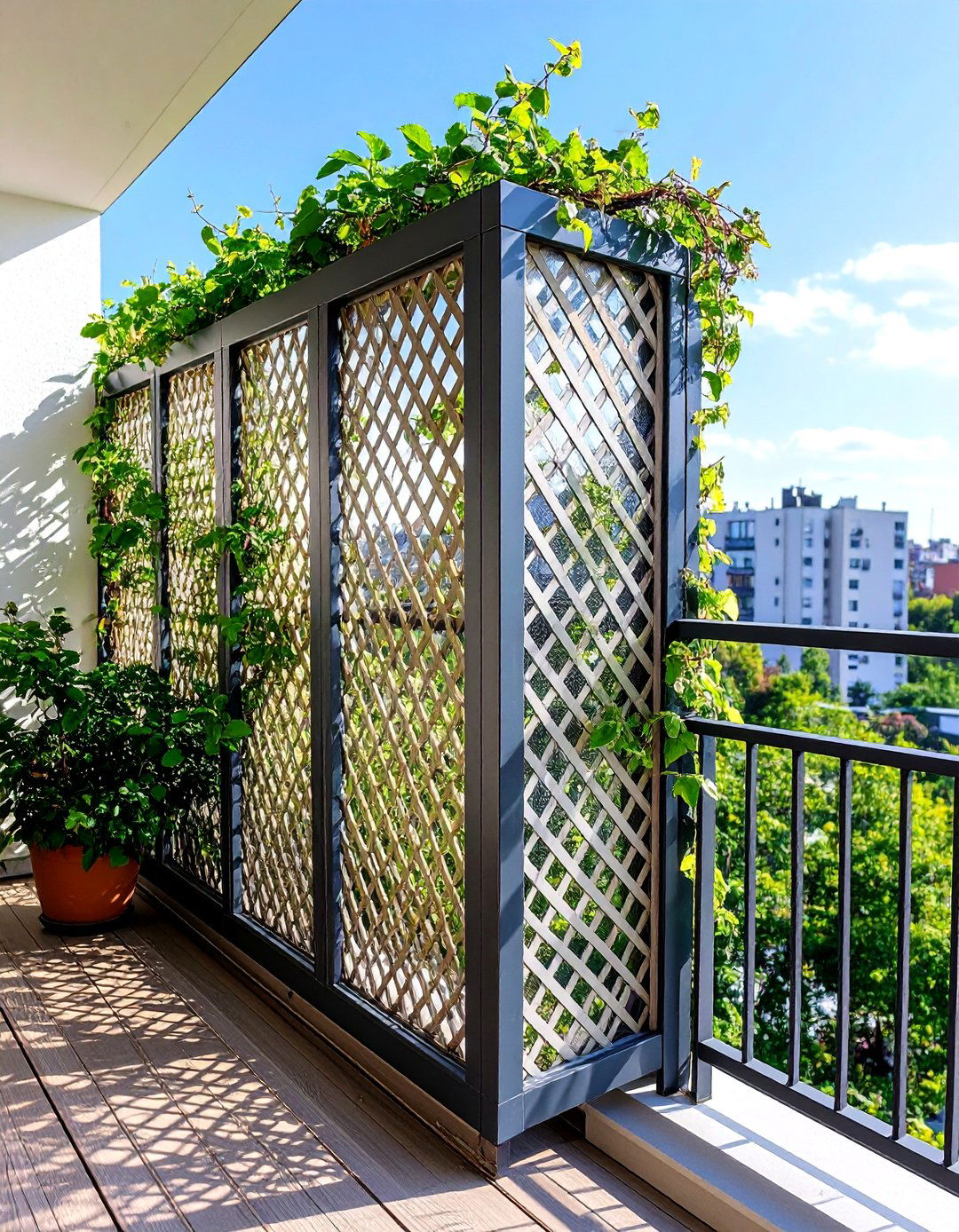

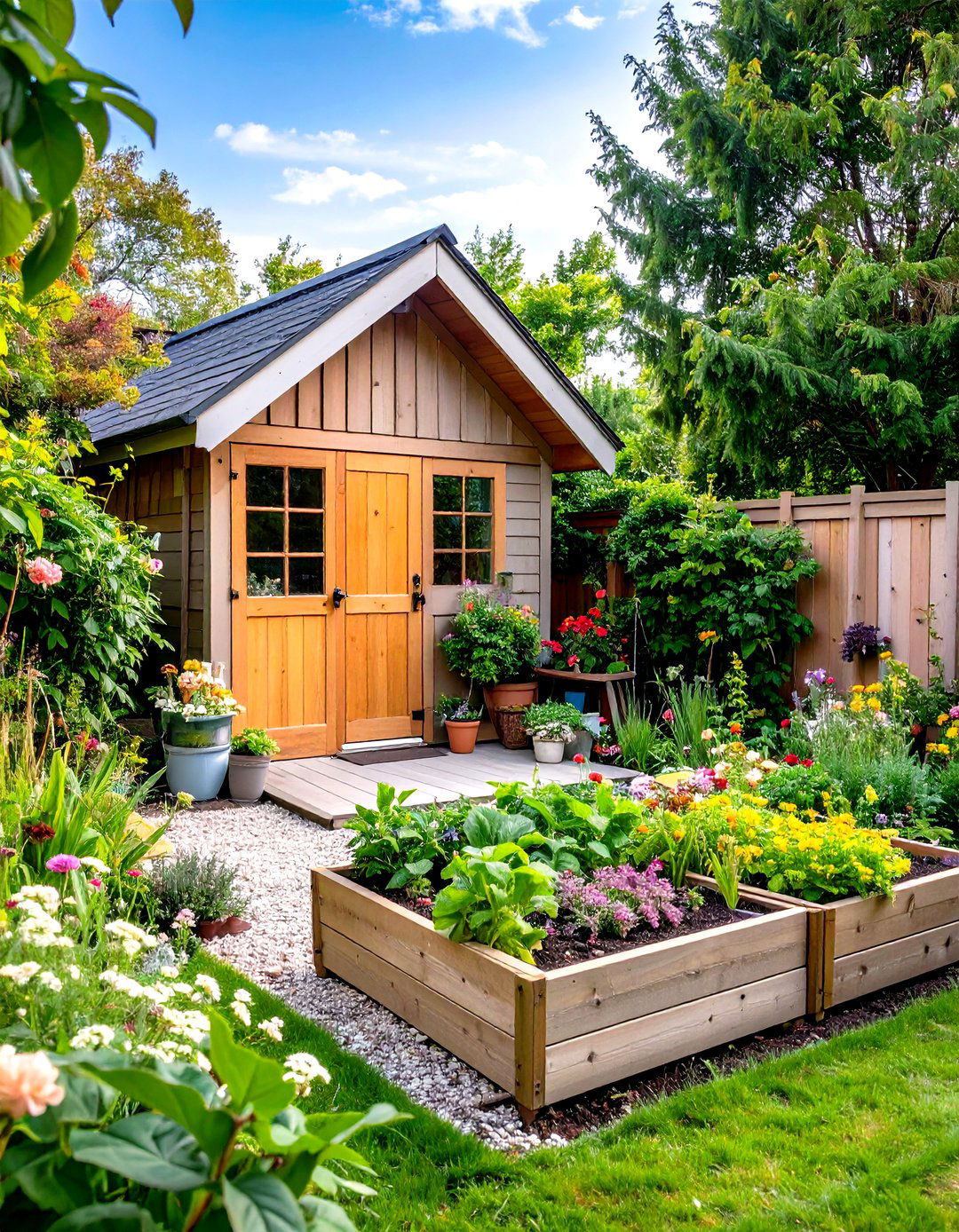

Leave a Reply